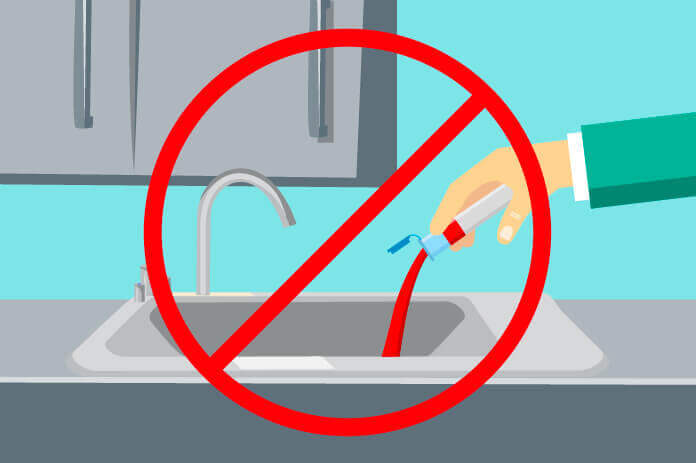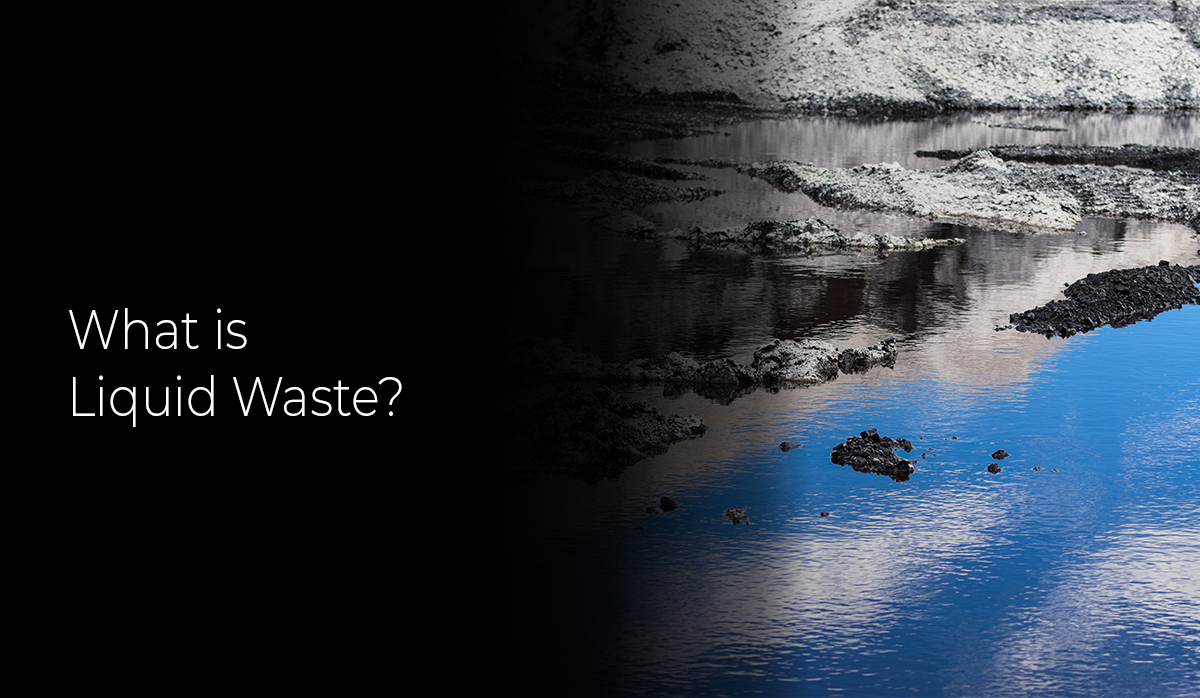Exactly How Liquid Waste Disposal Functions: A Detailed Introduction of Methods and Technologies Employed

Overview of Liquid Waste Types
The intricacy of fluid waste kinds necessitates a thorough understanding of their attributes and implications for disposal. Fluid waste can extensively be classified into numerous types, consisting of industrial, metropolitan, agricultural, and harmful waste. Each group displays distinctive residential properties, requiring particular management approaches to reduce ecological and wellness risks.
Industrial fluid waste originates from producing procedures and often includes a range of pollutants, such as hefty metals, solvents, and natural substances. Municipal liquid waste, mainly making up wastewater from homes and industrial facilities, has raw material, nutrients, and pathogens (industrial wastewater treatment). Agricultural liquid waste, including runoff from farms, might contain plant foods, chemicals, and pet waste, posturing risks to water high quality and environments
Harmful liquid waste is identified by its toxicity, reactivity, or potential to trigger harm. Comprehending these diverse fluid waste types is essential for developing efficient disposal techniques and guaranteeing conformity with environmental guidelines.
Physical Therapy Methods

Screening is the initial step, where larger particles and particles are eliminated from the liquid waste making use of displays or grates. In sedimentation containers, much heavier particles resolve at the bottom, forming a sludge layer, while the made clear liquid can be further dealt with.
Filtration is an additional crucial technique that involves passing the fluid through permeable materials, such as sand or membrane layers, to catch smaller sized bits. This action improves the quality of the liquid, making it suitable for subsequent treatment processes.

Chemical Treatment Techniques
Chemical treatment methods are necessary for efficiently handling fluid waste, particularly in addressing dissolved and colloidal pollutants that physical approaches may not appropriately get rid of. These strategies utilize different chemical agents to reduce the effects of, precipitate, or change harmful compounds into less hazardous types.
One common method is coagulation and flocculation, where chemicals such as alum or ferric chloride are included in advertise the aggregation of suspended particles. This procedure boosts sedimentation, permitting for much easier removal of the resulting sludge. Additionally, oxidation procedures, using agents like chlorine or ozone, are employed to break down complicated organic substances and microorganisms, making the waste safer for discharge or more therapy.
Neutralization is another crucial strategy, which changes the pH of acidic or alkaline waste streams to neutral degrees, preventing possible damage to downstream systems and the environment. In addition, advanced oxidation processes (AOPs) utilize mixes of oxidants and ultraviolet light to break down persistent toxins, attaining a greater level of therapy effectiveness.
Organic Treatment Processes
Organic treatment procedures play here a vital role in the management of liquid waste by using bacteria to break down organic matter and Clicking Here minimize contaminant degrees. These procedures can be extensively categorized right into aerobic and anaerobic treatments, each utilizing specific microbial neighborhoods to achieve efficient waste destruction.
Aerobic therapy includes using oxygen to assist in the breakdown of organic products by microorganisms. This process is generally implemented in triggered sludge systems, where oygenation containers offer a helpful setting for microbial growth, causing the oxidation of natural toxins. The resultant biomass can be separated from treated effluent with sedimentation.
On the other hand, anaerobic therapy takes place in the lack of oxygen, depending on different germs to damage down raw material. This method is especially helpful for high-strength waste, as it creates biogas, a renewable resource source, while minimizing sludge manufacturing. Technologies such as anaerobic digesters are regularly used in industrial and municipal applications.
Both aerobic and anaerobic biological treatments not only minimize the ecological impact of liquid waste however also facilitate resource recuperation, making them important components of sustainable waste administration techniques. Their effectiveness, efficiency, and flexibility sustain their prevalent application across numerous markets.
Arising Technologies in Disposal
Innovative strategies to liquid waste disposal are quickly advancing, driven by innovations in innovation and an enhancing focus on sustainability. Among these emerging technologies, membrane layer bioreactors (MBRs) have obtained traction for their capacity to combine organic treatment with membrane layer filtering, causing high-grade effluent that can be reused in numerous applications. MBRs allow smaller sized footprints and a lot more effective operations contrasted to conventional systems.
An additional promising advancement is using anaerobic digestion integrated with nutrient recuperation technologies, which Find Out More not only deals with liquid waste however additionally generates biogas and recuperates beneficial nutrients like nitrogen and phosphorus. This double benefit improves resource effectiveness and lowers environmental influence.
Additionally, advanced oxidation procedures (AOPs) are being taken on for the degradation of intricate organic contaminants. These techniques make use of effective oxidants and stimulants to break down impurities at the molecular degree, offering a highly efficient remedy for challenging waste streams.
Additionally, the combination of fabricated knowledge and machine discovering in waste monitoring systems is maximizing functional performance and anticipating upkeep, leading to decreased costs and boosted ecological conformity. These innovations mirror a significant change in the direction of even more lasting and efficient liquid waste disposal methods.
Conclusion
In final thought, effective liquid waste disposal necessitates an extensive understanding of various techniques and modern technologies. The integration of physical, chemical, and biological treatment approaches makes sure the effective management of diverse waste types. In addition, the introduction of ingenious technologies boosts treatment effectiveness and promotes sustainability in waste monitoring techniques. By constantly advancing these techniques, it comes to be possible to address the expanding challenges associated with fluid waste, ultimately adding to environmental management and source healing.
Fluid waste disposal is an essential element of ecological management, needing a thorough understanding of various strategies and technologies tailored to various waste kinds. Fluid waste can extensively be classified right into numerous kinds, including industrial, community, farming, and hazardous waste. Agricultural liquid waste, including overflow from ranches, may have fertilizers, pesticides, and animal waste, posturing dangers to water high quality and ecosystems.
Various physical treatment techniques play a crucial duty in taking care of fluid waste properly - industrial wastewater treatment.In verdict, effective liquid waste disposal requires a detailed understanding of different methods and innovations